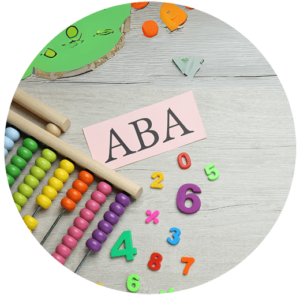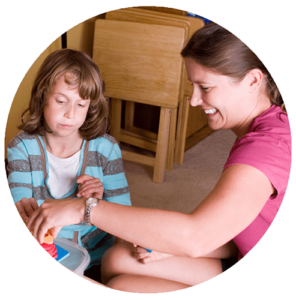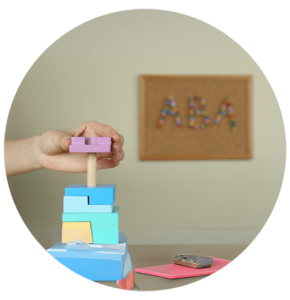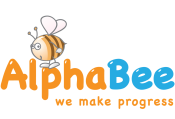Applied Behaviour Analysis (ABA): A Helpful Approach for Children with ASD
Find out more about ABA

What is Applied Behaviour Analysis (ABA)?
Applied Behaviour Analysis (ABA) is a therapy that may help children with Autism Spectrum Disorder (ASD) and other developmental delays. It focuses on teaching new skills and improving behaviours by breaking tasks into small, manageable steps. For example, if a child learns to ask for a toy using words instead of crying, the therapist praises this action. This positive reinforcement makes it more likely the child will use words again in the future.
ABA is based on the idea that rewarding positive behaviours encourages children to repeat them. Over time, this can lead to meaningful changes in how children communicate, interact, and handle daily tasks.
How Can ABA Help Children with Autism?
ABA may help children with ASD in several key areas:
Communication:
Many children with ASD struggle to express their needs or feelings. ABA can help them learn to use words, gestures, or pictures to communicate. For example, a child might learn to point to a picture of a snack when they are hungry or say “water” when they are thirsty.
Social Skills:
Interacting with others can be challenging for children with ASD. ABA can teach skills like sharing toys, taking turns, or responding to greetings. For instance, a therapist might use role-playing games to practice saying “Hi” or “Bye” during playtime.
Daily Living Skills:
Tasks like brushing teeth, dressing, or eating independently can be difficult for some children. ABA breaks these tasks into smaller steps, making them easier to learn. For example, a child might first learn to hold a toothbrush, then put toothpaste on it, and finally brush their teeth.
Behaviour Management:
ABA can help children learn to manage emotions and behaviours. ABA looks at what is happening in the environment and what is causing the behaviour. For example, if a child has tantrums when routine changes, a therapist might teach them to transition and tolerate changes while also teaching them a replacement behaviour like saying “I need help” or “More time” instead of engaging in the behaviour.
Therapy plans are tailored to each child’s needs and often involve parents practicing skills at home. This helps reinforce learning and ensures new skills are used in everyday situations.
What Does ABA Therapy Look Like?
ABA therapy sessions are designed to engage the learning in activities and tasks targeting specific goals. Here’s what a typical session might include:
Communication Practice
Children might use picture cards, or spoken language, or signs, to request snacks or toys. For example, a child could hand a picture of an apple to the therapist, or say “apple”, to ask for a snack.
Social Games:
Therapists might use games to teach sharing or taking turns. For instance, children might play a board game where they practice waiting for their turn and congratulating others when they win.
Skill-Building Exercises:
Tasks like buttoning a shirt or tying shoelaces are broken into smaller steps. A therapist might first teach a child to hold a button, then push it through the hole, and finally complete the entire task.
Play-Based Learning:
Many activities are designed to look like play but have specific learning goals. For example, building blocks might be used to teach colours, shapes, or following instructions.
Therapists aim to make sessions enjoyable and stress-free by giving children choices, such as “Do you want to practice writing or drawing first?” They also use calming strategies, like stretching breaks, and adjust activities if a child shows signs of frustration.

Who Might Benefit from ABA?
ABA may be helpful for children who:
- Have been diagnosed with ASD (typically between 1 and 18 years old).
- Struggle with speaking, social interactions, or self-care tasks.
- Find it difficult to manage emotions or behaviours.
ABA is not a one-size-fits-all approach. Each child’s therapy plan is customized to their strengths, challenges, and goals.
Behaviours ABA May Address
ABA can work on a variety of behaviours, such as:
- Not cooperating with routine tasks or instructions.
- Having tantrums when routines change.
- Difficulty making friends or playing with others.
- Refusing to eat certain foods or go to bed.
Therapists work to understand why these behaviours occur and teach more effective ways to respond. For example, if a child has tantrums when transitioning from playtime to bedtime, a therapist might introduce a visual schedule to help them prepare for the change.

Is ABA Therapy Stressful for Children?
Good ABA programs aim to make learning fun and reduce stress. By mixing play with skill-building activities and giving children choices, therapists create a positive environment. They also watch for signs of frustration and adjust activities to keep sessions enjoyable. For example, if a child seems tired or overwhelmed, the therapist might switch to a calming activity like reading a book or drawing.
Can ABA Guarantee Results?
While ABA may help many children, results can vary. Some families report improvements in communication, social skills, and daily functioning, but it’s important to remember that every child is unique. ABA is not a cure for ASD, but it can provide tools and strategies to help children navigate their world more effectively.
Next Steps
If you’re interested in learning more about how ABA may benefit your child, reach out to us at AlphaBee using the contact form below. Our team can provide more information and help you explore whether ABA is the right approach for your family. We understand that every child is different, and we’re here to support you in finding the best way to help your child thrive.

